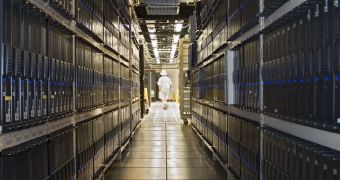The Japanese University of Kyoto has just placed an order for an AMD Opteron-based supercomputer. The machine will be built using 416 HX600 high-performance computers built by Fujitsu. Each computer is powered by four quad-core Opteron processors, which means that the cluster totals 1,664 processors and 6,656 Opteron cores.
"This new supercomputer system upgrade represents a significant departure from our past procurement practices. This time we laid out the basic concept of the new supercomputer along with general specifications based on the T2K Open Supercomputer Specification jointly created with the University of Tokyo and University of Tsukuba, and we asked vendors to develop systems and submit proposals to meet our requirements," said Hiroshi Nakashima, Professor at Kyoto University's Academic Center for Computing and Media Studies.
The computing cluster will be primarily used for scientific calculations, genomic information processing, computer graphics and large archive searches. Moreover, the main cluster will be accompanied by a multiprocessing cluster consisting of seven SPARC enterprise Unix servers, powered by SPARC64 processors, and with 1T byte of memory.
"In this sense, I think it was more difficult this time to develop systems proposals that met our requirements, but this HX600 cluster exceeds our baseline requirements for performance and functionality, so we're very pleased with the outcome. The SPARC Enterprise M9000 sub-system will be able to directly utilize our existing software assets, and the high-capacity storage system can also be configured to exceed our base requirements," he continued.
The new supercomputer will replace the previous computing cluster at Kyoto University, and will bring seven times more power than the latter. Apart from the obvious computing power boost, the new supercomputer will require only 15 percent of the watts per teraflop.
The supercomputer will deliver a peak performance of 61.2 Teraflops, which would bring it on the top 20 most powerful computers in the world.

 14 DAY TRIAL //
14 DAY TRIAL //